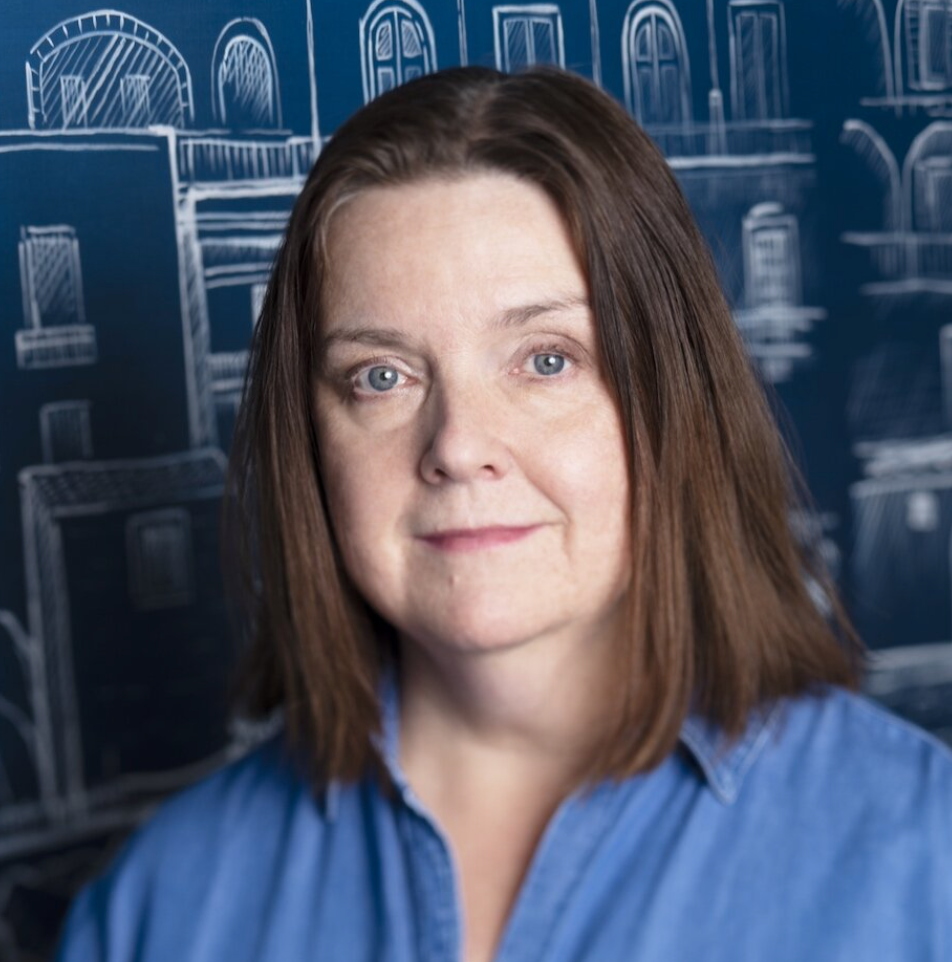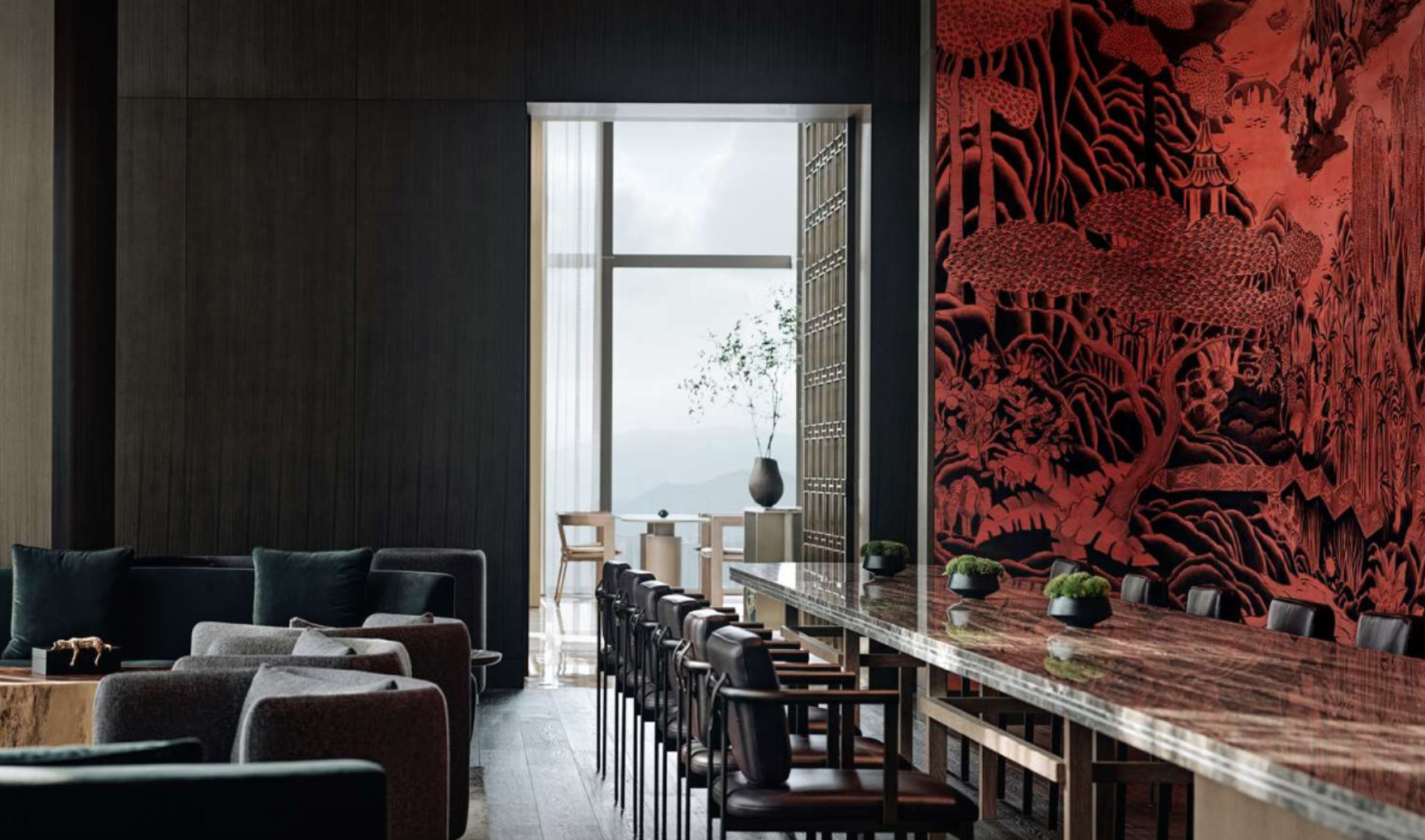Deborah Moss
“…it’s important to find your voice and make sure you are heard. Align with who you are, check your messaging then double check you're heard. Ultimately your work will speak for itself but to get to that point you have to tune in with your own guidance system, and that takes practice, but it always pays off.”
Photo By: Stefan Blondal
#WomenWhoBuild meet Deborah Moss,
Deborah is a Canadian artist and co-founder of Moss and Lam, a custom art studio based in Toronto, Canada. Moss and Lam, founded in 1987, has been commissioned by architects and interior designers around the world in the creation of custom wall surfaces, installations, and artworks. Since its inception, Deborah has worked with top industry names including the Four Seasons Hotel, the W Hotel, Tiffany & Co., and the Peninsula Hotel.
ArchNative sat down with Deborah to discuss her journey in Art, what pushed her to take the leap of faith and create Moss and Lam, her creative process in approaching each project, and her advice for women entering the field.
Tell us a little bit about yourself and your journey in Art? What made you decide to pursue it as a career choice?
I was one of those kids who always wanted to be an artist. I couldn't imagine anything else really. At the end of high school my mother begged me to take some typing courses but I resisted. Looking back I was happiest when surrounded by my art supplies, keeping busy making something. I was a bit of a loner/introvert and could get lost in that world. My homelife was supportive of this pathway. While I grew up in a typical suburban home in Toronto, my parents were probably a bit different from the neighbors. My father was a banker by day but would come home and trade his business suits for his "work clothes" to go into his woodshop. He would make little sculptures and assemblages and was happy to teach me how to chisel and hammer. He had a curiosity about things that I think I absorbed. He collected "treasures" - things he found interesting, from fallen pinecones to a mouse skeleton or a beautiful weathered branch.
My mother was a stay-at-home mum but took great pride in decorating the house. She was constantly experimenting with wallpapers, upholstery and furniture. My parents both shared a love of collecting antiques, from Imari porcelains to Blue and White Willow ware, Japanese woodblock prints, walking sticks and music boxes. As a visually minded kid I reveled in this visually stimulating environment. I learned how the world of "things" could create a meaningful backdrop that reflected a personal sensibility. What excited me as well was that I knew that someone, an artist or craftsperson had had a hand in making these beautiful things. I developed a respect for the decorative arts and the skills of the people behind their making.
For post secondary, I studied Art History at the University of Toronto. I wanted to understand the development and history of visual language. In my 3rd year though I realized I was missing actually making things. I wanted to get my hands dirty. I transferred to the Ontario College of Art. This was a pivotal time for me, surrounded by other young creatives, learning how to express oneself, sharing ideas. At this time I met my future work and life partner Edward Lam.
Park Hyatt Shenzhen Bar Mural by Moss and Lam// Photo by Virgile S. Bertrand
What made you take the leap of faith and create your own company, Moss and Lam?
We started Moss and Lam soon after graduating in the late eighties. We were a bit nervous about what the future held in store, financially speaking. We never thought Moss and Lam would be a lifelong venture but more of a way to make a bit of money now and then. At that time the world of faux finishes was very popular. With my interest in decorative arts and our abilities as painters, we thought this would be an easy thing to get into. We were both adept with paint and color theory. How hard could it be? I think to be an artist you have to have a lot of ingenuity. We both had a sense that we could figure this out. The artistic side of the business was natural to us. Our college art training translated well to communicating with Interior Designers, Architects, and clients. The business side of things was another matter, but luckily our artistic side was tempered with a lot of common sense. We found that the world of business required a different form of creative thinking which we enjoyed learning about.
W1 Table Series by Moss & Lam// Photo by Rocky Choi
You have been commissioned by the world's leading interior designers, how did you initially get into this space?
Truthfully we were in the right place at the right time. When we started Moss and Lam there wasn't much competition. People were thrilled by our offerings and it was easy to open doors. Early on in our career we started working with another young Toronto design firm, Yabu Pushelberg, who were starting to make a name for themselves. We met through a mutual friend and we started collaborating with them immediately. Within a year or so they had their first overseas retail project in Taiwan called Sunrise Department Store and they brought us into the picture. We learned a lot about ourselves.... and about shipping and scale. Working with YP on various high profile projects certainly catapulted our visibility in the industry, which opened up demand from other design leaders. As well, Edward and I pushed ourselves past the early faux finishes and mined our art training to create new visual offerings. Our natural curiosity pushed us to say what can we do next? Now a proportion of Moss and Lam work still revolves around wall finishes but we also offer murals, mobiles and private commissioned art.
Raffles Hotel Art Installation by Moss and Lam// Photo by: Owen Raggett
How do you approach each project? What is your creative process?
Each project is like a blank piece of paper. There are criteria and stakeholders in the margins but I like to think: "what can I do here that's meaningful to me?" I need to find meaning to bring meaning. It's a lovely moment of fresh curiosity about the potential ahead, like entering a new relationship. Ultimately though, it's about listening to the ask and understanding clearly what the client is wanting from us. I will then do a deep dive research into a range of possibilities. One of my mantras is "no shame." What this means to me is any idea has potential. Eventually ideas are weeded out until one or two concepts stand out.
What does your day to day look like?
I'm up at 6:45 am when I make some coffee and take my dog out for a quick walk. This helps clear my head before I open my computer. I'll sit down to quickly scan emails to see if there is something urgent to deal with before heading into the studio. Every day at work is different depending on what we're working on at that time. I'll start the day at work with check ins with my PM and Design team, then head to the studio in back to talk to the artists and see how projects are progressing. Throughout the day I'm fairly tied to my desk but welcome any chance to go back into the studio.
What has been your favorite project to work on and why?
Three projects come to my mind in particular. Nuit Blanche - a personal meditation on the emotions that come out at night, in a very public setting. This was more like a commissioned piece, no client or brief, just me putting myself out there.
Additionally, Las Alcobas, for which Moss and Lam created a complete art collection for a boutique hotel in Napa. This project used the full force of skills available at our company. Lastly, Park Hyatt Shenzen, a complex project of murals and accessories. Seeing the artists engaged in doing their best for such a beautifully complicated project was a thrilling moment.
What has been the biggest challenge of your career? What has been the biggest triumph?
The biggest challenge - when Edward passed away 8 years ago. I lost my partner in life and business. We shared a vision and the responsibilities for running the company. I had to find a way to steer the ship single handedly. The responsibility was immense and I came to question my personal motivation and goals. The waters have been choppy at times but I've found a great joy in this role.
What advice do you have for women entering the field?
I think it’s important to find your voice and make sure you are heard. Align with who you are, check your messaging then double check you're heard. Ultimately your work will speak for itself but to get to that point you have to tune in with your own guidance system, and that takes practice, but it always pays off.
Alila Napa Valley, Restaurant Art by Moss and Lam// Photo by: Alice Gao





